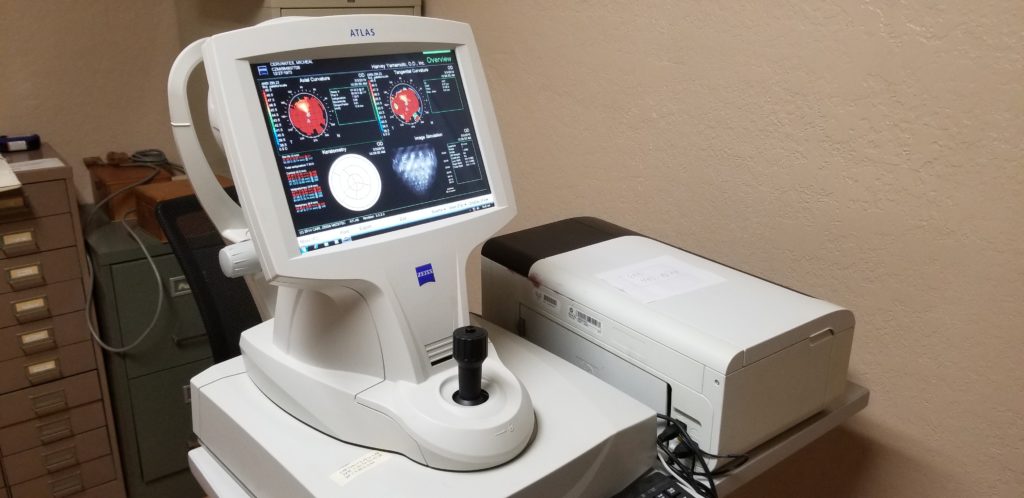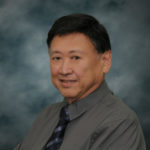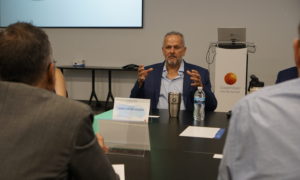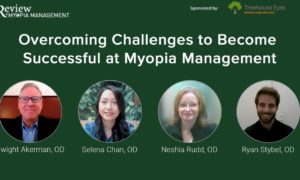Sponsored content
Nov. 27, 2019
By Harvey H. Yamamoto, OD
 Achieving clinical success with Ortho-K requires clinical knowledge to meet the unique set of challenges that each patient presents. In addition, you need a comprehensive set of diagnostic tools and the best lens designs available to address any condition. Finally, you need the expertise and assistance of an excellent lens manufacturer and lab. We regularly depend on GP Specialists for Ortho-K lens selection and fine-tuning for success.
Achieving clinical success with Ortho-K requires clinical knowledge to meet the unique set of challenges that each patient presents. In addition, you need a comprehensive set of diagnostic tools and the best lens designs available to address any condition. Finally, you need the expertise and assistance of an excellent lens manufacturer and lab. We regularly depend on GP Specialists for Ortho-K lens selection and fine-tuning for success.
GP Specialists is the lab of choice for our practice as they can custom make our patients many different types of specialized lenses. We seem to get very high cylinder patients asking about contact lenses. We can order them from GP Specialists, and our patients keep returning year after year for more of their lenses. GP Specialists was one of the first labs to offer toric cylinders in their Ortho-K lenses. Others have emulated their designs but they are nothing like the originals.
Utilize a Fitting Chart
GP Specialists has developed a unique fitting chart which any practitioner can learn to use within minutes. We have used the chart in our practice for the past year, and the chart is practically foolproof. The chart tells the practitioner the ideal lens to order from GP Specialists. In our practice, we find that the chart works 85 percent of the time with the first lenses ordered for our patients.
I recommend this fitting chart for the novice practitioner who wishes to begin incorporating Ortho-K lens fitting in their practice.
Know Your Lens Designs and Utilize a Full Range
Many labs offer some form of Ortho-K lenses. If your lab keeps your patients happy and you like their consultants, then I recommend that you stay put.
GP Specialists carries its own lens brand and other brands as well. Many doctors also have their own designs made by GP Specialists. At times, our practice will specify certain parameters, but in 80 percent of the cases, we will use one of GP Specialists designs.
We will use the Paragon CRT design for lower myopes (-0.75D to -3.00D). When we have higher myopic patients, we will order the iSEE brand upwards of -5.00D.
For patients with higher end myopia and flat K’s we offer the Global OK Vision (GOV) line of products. We also have Hyperopic and Presbyopic designs available through GOV.
Global OK Vision is owned and operated by Dr. Arthur Tung in Taiwan. He is a brilliant physician who owns many patent rights to his designs.
Use the Right Tools
A practitioner with limited funds can get started with Ortho-K lens with a good autorefractor, keratometer, fitting chart and fluorescein strips.
A corneal topographer will come in handy to allow the practitioner to see what changes are taking place on the cornea. If a practitioner does not wish to invest in a corneal topographer, fluorescein strips are an absolute must-have.
I enjoy introducing my colleagues to the world of Ortho-K. Once they do one fitting and see the smile on their patient’s face, they will be as hooked as I am. We have also found that patients who require specialized contact lenses become very loyal to our practice and they do not shop around.
A Lab Consultant is Your Right Hand
Having a lab with a good consultant is a must. I rely on Mark Cosgrove, Vice President of GP Specialists. He has extensive experience in fitting Ortho-K lenses, and he helps me troubleshoot patients. I send Mark a picture from my corneal topographer, and he helps me to design a perfect lens. If you don’t have a topographer, a fluorescein picture taken on your iphone also can enable Mark to help you troubleshoot your patients.
Ortho-K Lens Fitting:
Essential Equipment
Corneal Topographer ($3,000 -$5,000 used; $8,000 – $20,000 new)
Fitting sets: 12 lenses up to the larger fitting set = 940 lenses
Auto refractor
Keratometer
Fitting chart by GP Specialists
Fluorescein strips
Slit lamp
Burton lamp
Success with Ortho-K: Practical Tips
Fitting Ortho-K lenses can add as much as $100,000 a year to the bottom line of a practice, so this a great specialty to add to any practice. The following are several factors that contribute to success.
Connect with parents: One of the best ways to promote Ortho-K lenses is to introduce the myopia management concept to parents who have children with myopia. They also are a great source of referrals. We introduce Ortho-K lenses to young myopes. Many will ask for Ortho-K lenses once they reach puberty, and they do very well with them.
Be prepared and confident: When fitting specialized lenses, one must be mentally prepared. Act very knowledgeable and confident when talking to their patients about Ortho-K. Our website also draws in many such patients.
Screen: We carefully screen our patients for candidates. We avoid high cylinders and hyperopes. We have many other forms of specialty lenses for most of our patients which includes custom–made soft lenses for high cylinders, and flat corneas that cannot be fitted with box type lenses.
Partner with a Lab: There are many labs offering their version of Ortho-K lenses, but none compares with the more advanced and aggressive designs manufactured by GP Specialists. They are a key partner in our success.

Harvey H. Yamamoto, OD, is a leading contact lens specialist and lens designer who has been fitting contact lenses for more than 40 years. His practice in Ontario, Calif., www.yamamotovision.com, specializes in myopia management, among other specialties.

| The Ortho-K Knowledge Bank provides clinical insights and strategies for practice management and business growth. It is created by Review of Optometric Business and Review of Myopia Managementfor sponsor GP Specialists. | ||
 |
 |
 |














